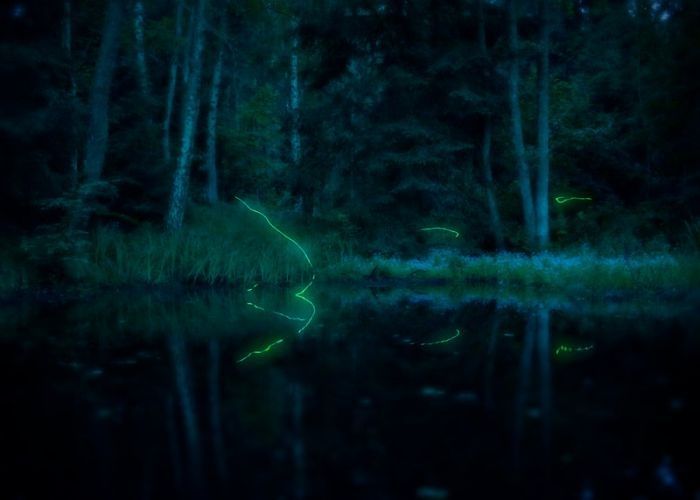|
|
Fireflies In The Night
|
Many fireflies do not produce light. Usually these species are diurnal, or day-flying, such as those in the genus Ellychnia. A few diurnal fireflies that primarily inhabit shadowy places, such as beneath tall plants or trees, are luminescent. One such genus is Lucidota. These fireflies use pheromones to signal mates. This is supported by the fact that some basal groups do not show bioluminescence, and rather use chemical signaling. Looking at pheromones in Phosphaenus Hemipterus. P. Hemipterus has photic organs, yet is a diurnal firefly and displays large antennae and small eyes. These traits strongly suggests that pheromones are used for sexual selection, while photic organs are used for warning signals. In controlled experiments, males coming from downwind arrived at females first, thus male arrival was correlated with wind direction, indicating males' chemotaxis into a pheromone plume. It was also found that males were able to find females without the use of visual cues, when the sides of test petri dishes were covered with black tape. This along with the facts that females don’t light up at night and males are diurnal, point to the conclusion that sexual communication in P. Hemipterus is entirely based on pheromones.
|
|









